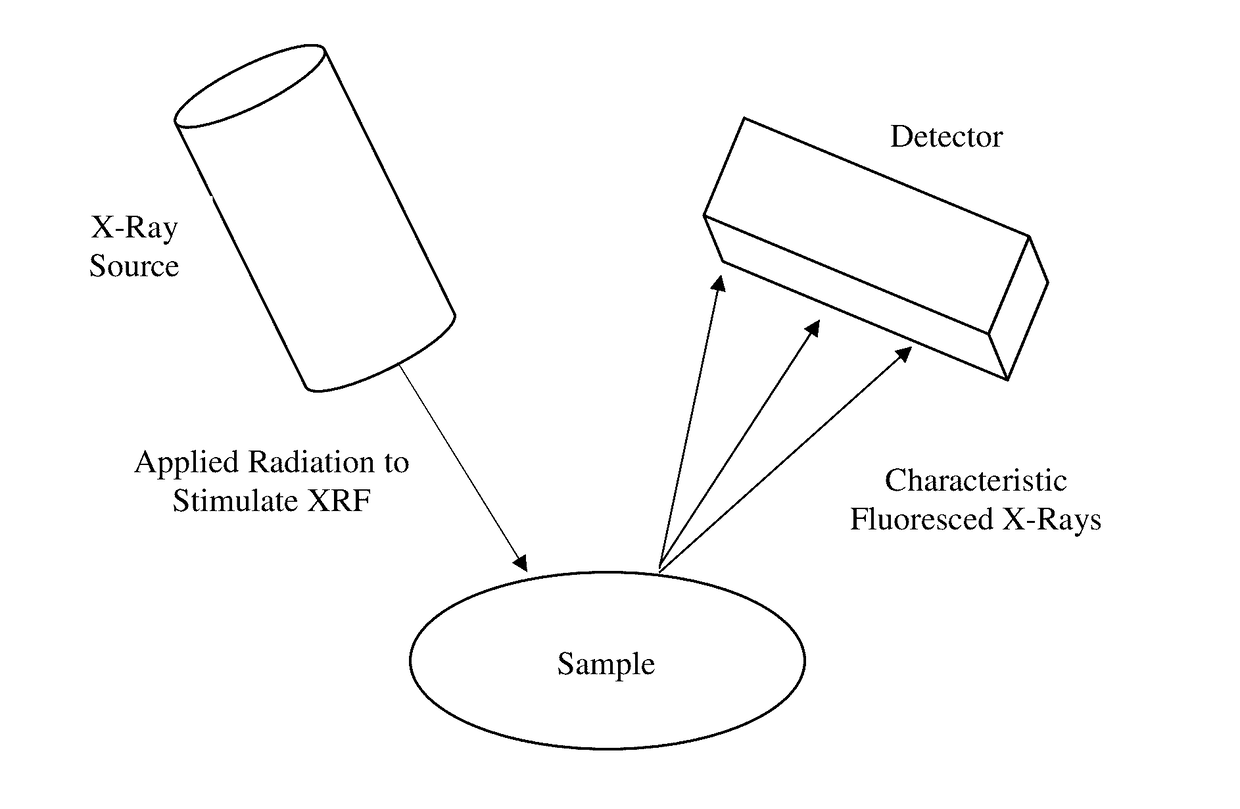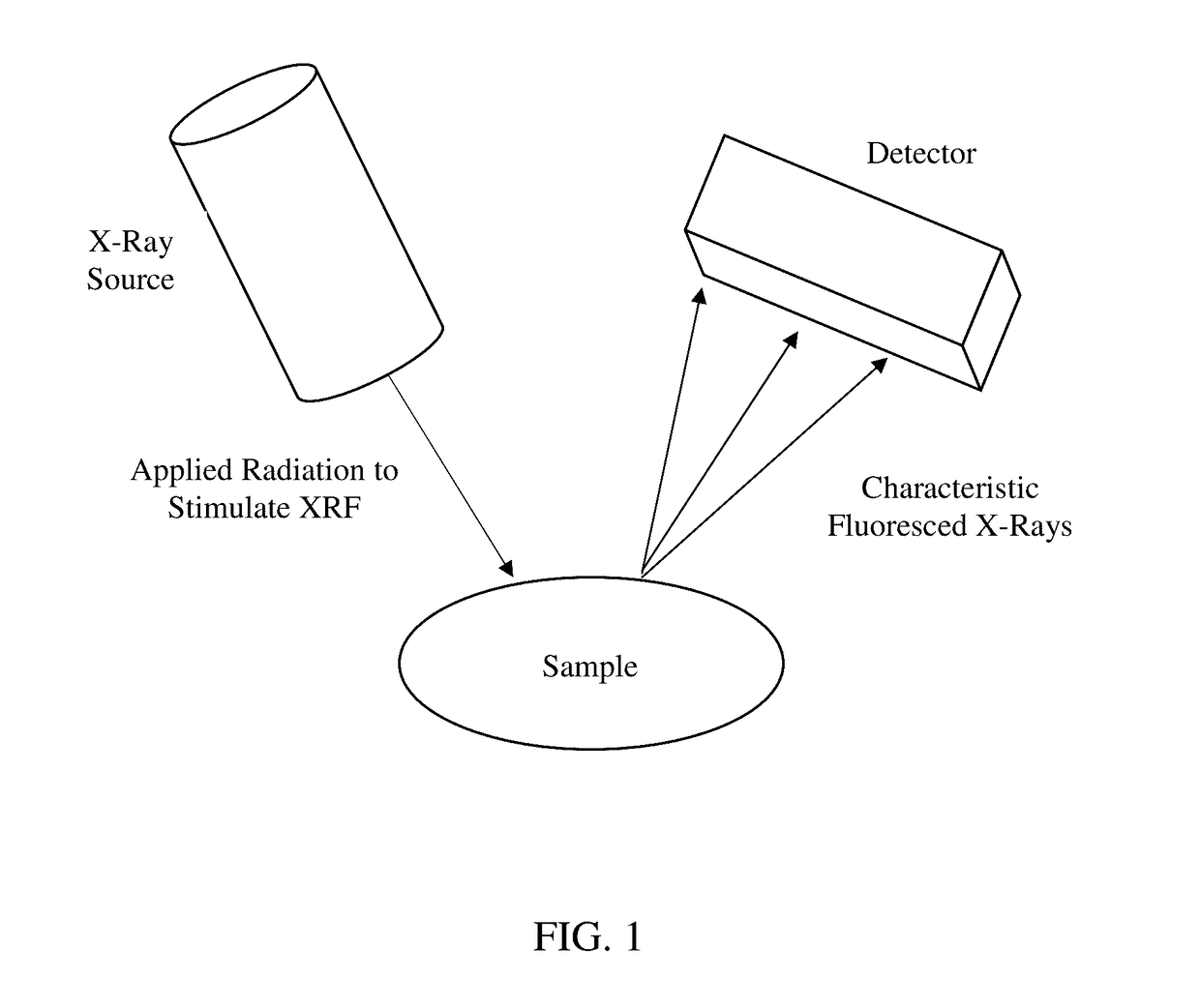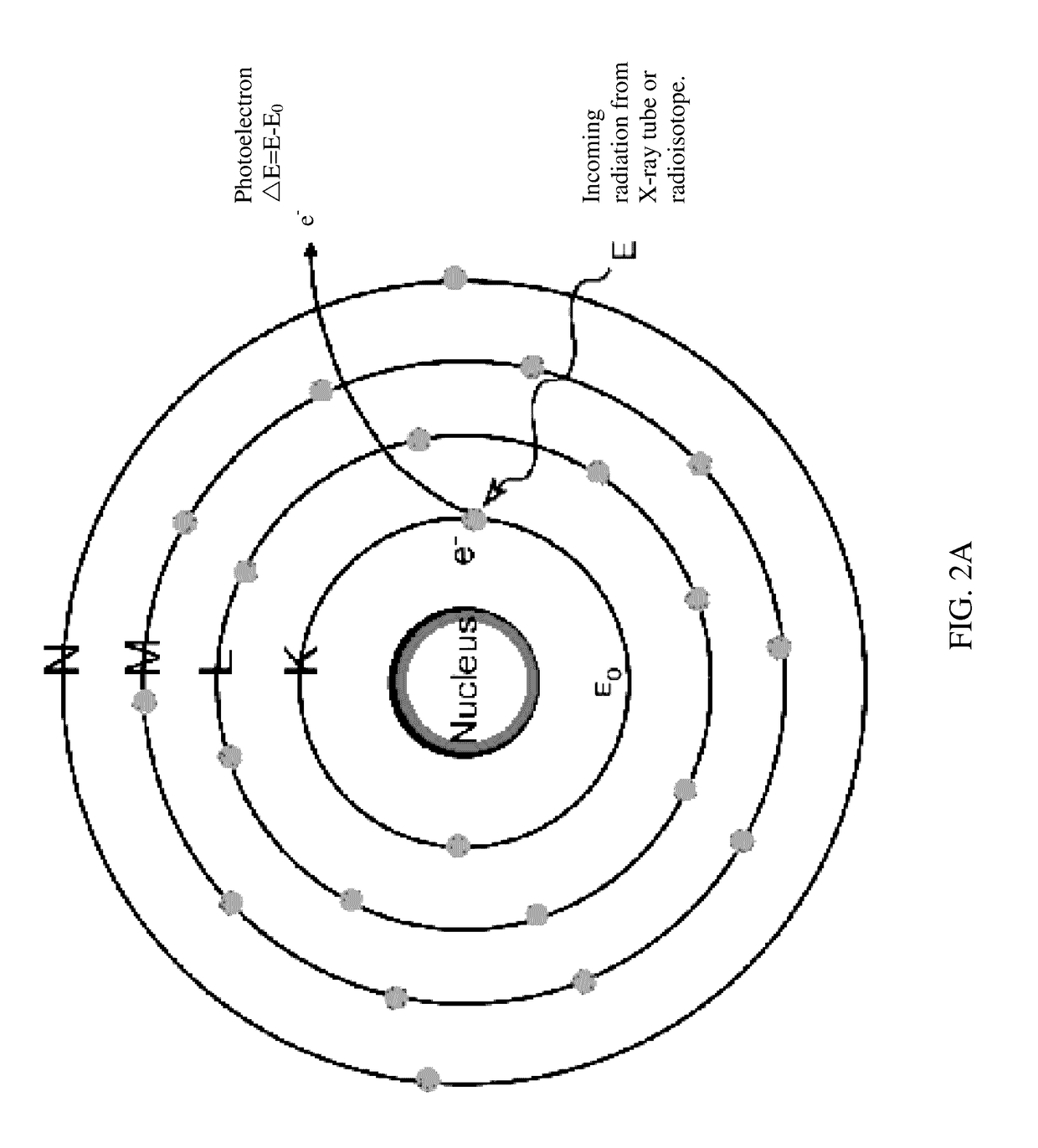Multiplexing x-ray fluorescence system and method
- Summary
- Abstract
- Description
- Claims
- Application Information
AI Technical Summary
Benefits of technology
Problems solved by technology
Method used
Image
Examples
example
[0042]A test was carried out using a pair of MXS units. One unit produced primarily 6.93 keV (Co K alpha) radiation, and the other unit produced primarily 7.48 keV (Ni K alpha) radiation. For the samples, iron and chromium were used as two respective samples and a control “sample” had no material. The control was used to provide an estimate of background. Iron has a K binding edge energy of 7.11 keV, and thus would only be stimulated into XRF by the Ni (7.48 keV) MXS. Chromium has a binding energy of 5.99 keV and could be stimulated by both the Ni and Co MXS units. This MXS configuration and choice of samples produced the expected results, as shown in FIG. 6, representing a demonstration of the time-modulated x-ray fluorescence system and method of the present invention. The acronym “cps” in FIG. 6 is short for “counts per second.”
PUM
 Login to View More
Login to View More Abstract
Description
Claims
Application Information
 Login to View More
Login to View More - R&D
- Intellectual Property
- Life Sciences
- Materials
- Tech Scout
- Unparalleled Data Quality
- Higher Quality Content
- 60% Fewer Hallucinations
Browse by: Latest US Patents, China's latest patents, Technical Efficacy Thesaurus, Application Domain, Technology Topic, Popular Technical Reports.
© 2025 PatSnap. All rights reserved.Legal|Privacy policy|Modern Slavery Act Transparency Statement|Sitemap|About US| Contact US: help@patsnap.com



